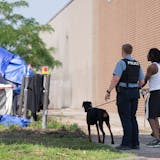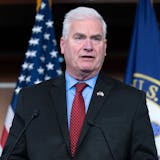The rush to place blame is natural in a crisis.
Depending on the source, the coronavirus pandemic and its devastating human and economic consequences are the fault of the Chinese, the Trump administration, impeachment-obsessed Democrats, governors who either moved too quickly or too slowly to shut down their states, and profit-hungry corporations that failed to protect employees or refused to quickly retool to produce needed health care products.
All of that must be sorted out in due time. But for now, as Minnesota and other states move to loosen restrictions on businesses and residents, looking back is less important than navigating what lies ahead. How well Americans adjust to the changed world — and how much responsibility they are willing to take for themselves and others — will be critical in determining how long this nightmare will last and how many lives will be lost.
Yes, widespread testing and tracing are key. Yes, health care systems must have adequate equipment and other resources. Yet even when those needs are met, the best way to stop the virus will be to limit transmission.
During a recent trip to a Menards store in St. Paul, an Editorial Board observer saw how the behavior of workers and shoppers showed the gulf between the goals and reality of a basic recommendation called for in all back-to-business plans: social distancing.
To its credit, Menards had put a number of new procedures in place. All employees were wearing masks. An employee stationed at the door directed shoppers to "returns or purchases." A plexiglass partition had been installed at the return counter.
To better control the traffic flow, aisles closest to the checkout area were blocked on one end with a snow fence so that those who wanted to pay could be funneled to the widest aisle, where a worker directed shoppers to specific lines. Employees all appeared to be keeping a minimum of six feet apart.
So how about the customers?

